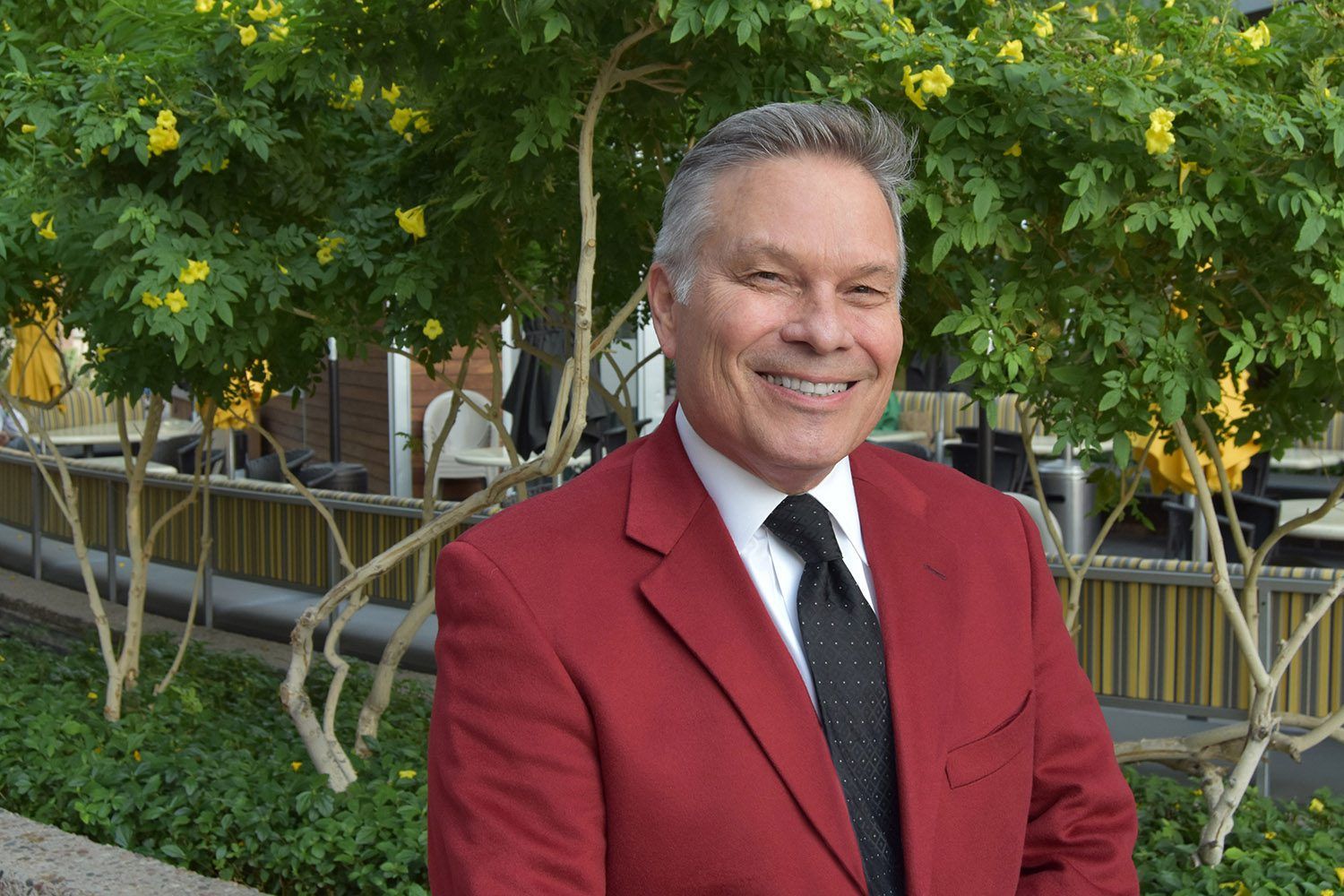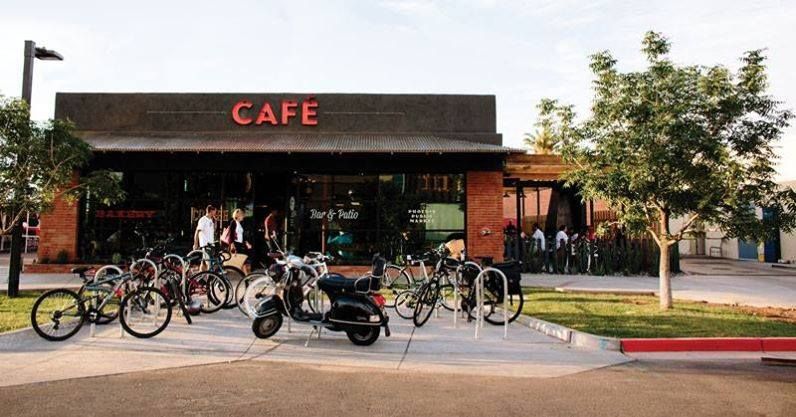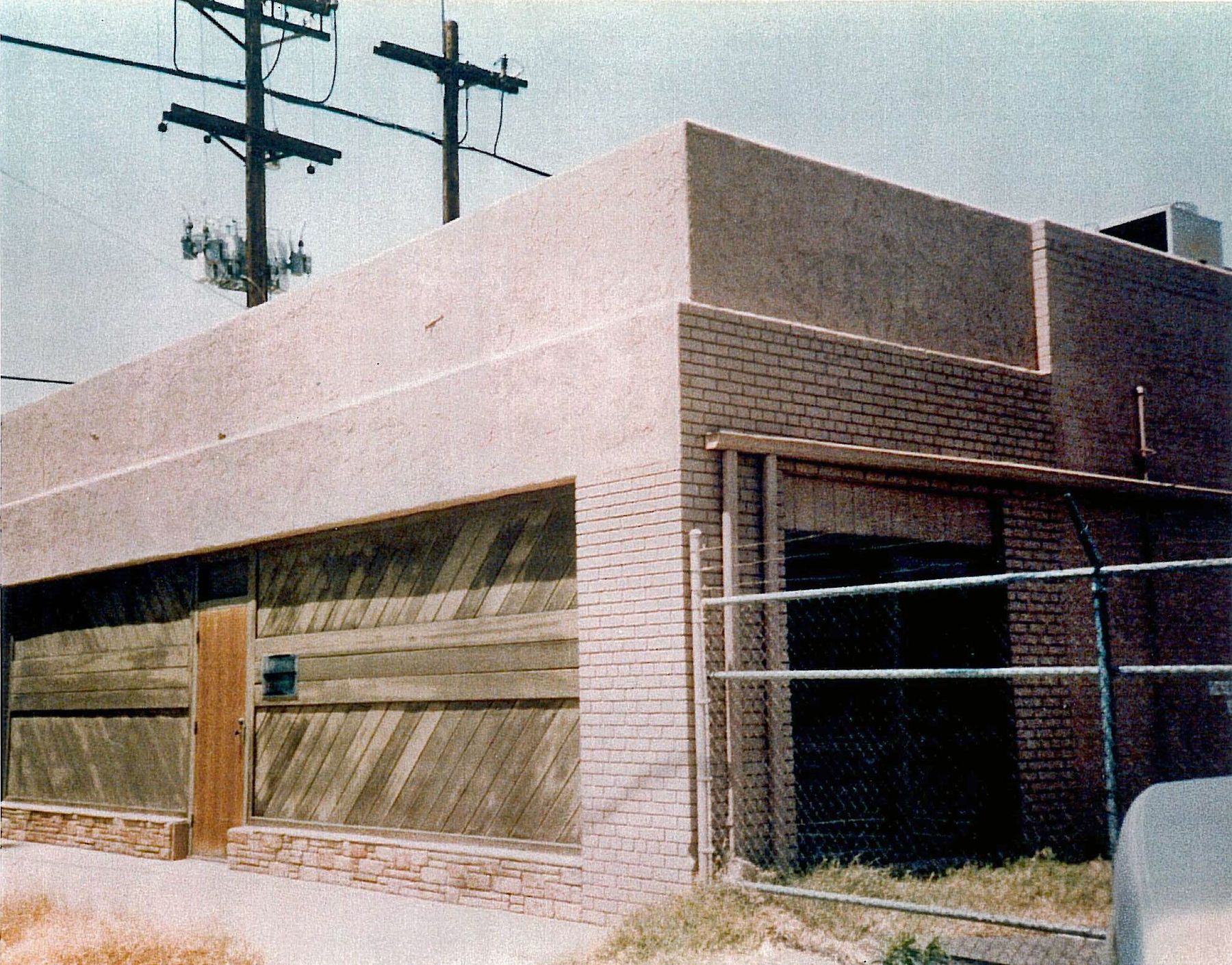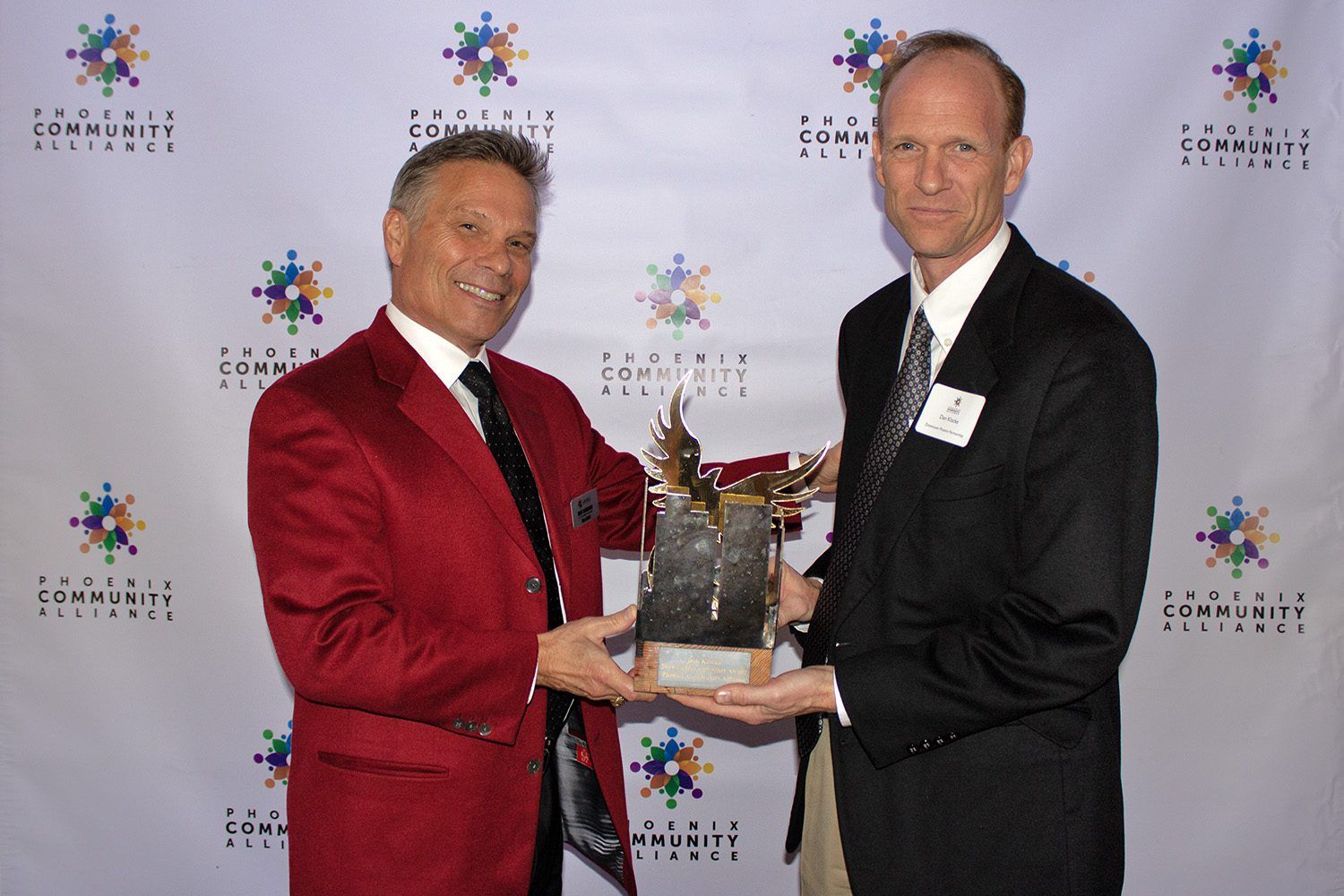Meet Kurt Schneider, A Phoenix Community Alliance "City-Shaper"
Kurt Schneider arrived to a different Downtown Phoenix on June 1, 1991.
He relocated to Phoenix from Seattle after acquiring two blocks of dilapidated properties, one of which would become Phoenix Public Market. When he purchased the building, it was boarded up and “frozen in time.” Investment in Downtown had just begun with the opening of Arizona Center, but proof of a vibrant core was still years away.
Seattle was never far from Kurt’s mind, remaking properties to retain the historic charm and bring inviting landscaping to a barren area.
As the “guy on the ground” and participant in Downtown’s revitalization, his focus as a property owner often aligned with PCA’s focus, making it easy for him to participate in its Central Avenue Committee and the Graffiti Hotline committee.
The “City-Shapers” series fills in the gaps of historical knowledge of Phoenix Community Alliance, a four-decade-old business advocacy organization that has influenced the growth of Downtown and beyond.

Q: How did you enter the orbit of Phoenix Community Alliance?
Schneider: I didn’t know exactly where Downtown was going. However, the property purchase had multiple levels of value from its initial land value, redeveloping the existing buildings into something cool and future new construction.
I knew there must be a Downtown organization with which I could get involved. My first stop was the Downtown Phoenix Partnership. I made an appointment with Margaret Mullen, the Executive Director of DPP at the time.
Since the property was outside DPP’s boundary, she said, “You may want to try PCA.” I talked to Jo Marie [McDonald, then its Administrative Manager], and that’s how it started.
My very first meeting was in the summer at the Mercado. Any major business that was Downtown, like APS, the newspapers, the Suns, and Wells Fargo, were all in the room. I’m sitting there, and a guy comes up and taps my shoulder, “Is anybody sitting here?” I look up; it’s Jerry Colangelo. I knew this was the organization for me.
Q: Could you describe more of that trajectory as a Member and a ground-level Downtown property owner?
Schneider: For instance, the public market was a PCA-related event. We were meeting in the Suns boardroom, and Cindy Gentry [Executive Director of Community Food Connections] made a presentation about starting a public market Downtown.
I’m sitting next to John Chan [City of Phoenix’s Deputy Director of Downtown Development], and we had a land trade with the city. And I said, “Why don’t you throw in the ground for parking, and we’ll see if Cindy can make it work.” That’s how she got her start.
Beginning Feb. 12, 2005, the outdoor market drew crowds and sometimes 50+ vendors, with a mixture of food, crafts, and produce, with an eye toward making services a permanent, daily fixture.

By 2013, Schneider brought in chef Aaron Chamberlin, the owner of the former St. Francis restaurant, and his concept of Phoenix Public Market Café, bringing the location one step closer to Kurt’s Pike Place vision. The café closed as a result of COVID in March 2020 and never reopened. Eventually, the building and half-acre site were sold to developers, who demolished the site for a housing development in July 2022. Now known as the Downtown Phoenix Farmers Market, it is thriving in a new location in the Phoenix Bioscience Core.
The original vision was to redevelop the buildings and make them fun and funky, like Belltown, Seattle, which is located between Downtown and the Space Needle. There were eight different buildings, and once you start doing that, it has a positive impact on the neighborhood. Downtown had a long way to go back then, and success was not overnight. It took a long time to get where we are today. I originally thought it would be a ten-year process. The market crashed three times along the way, so it took a little longer.
Q: What were some notable initiatives you took on when you became more involved in PCA?
Schneider: Eventually, you are selected to be a committee chair. My first was Central Avenue Committee when PCA was reestablishing its outreach with property owners along Central Avenue in Midtown. Light rail was the main focus.
I also served on the Graffiti Hotline Committee since I was often a target, being a building owner. Then around 2007, [its Chair] Bob Shcolnik retired, and Jo Marie said to me, “You want to take it over as the chair?” So, I did. I was chair for about ten years.
The Graffiti Hotline Committee formed in 1995 when PCA business leaders saw a rise in graffiti throughout the city and recognized its negative impact on economic investment. Over the years, the Committee developed a direct relationship with the Phoenix Police Department and Maricopa County officials in promoting awareness and coordinating rewards. By 2016 $278,000 in rewards were distributed from RICO Community Grants and Block Watch grant funding, which empowered non-profits and the community to fight crime.
The focus was to hand out reward money to entice people to turn in vandals when they see them. It created more awareness of graffiti, how bad it was, and how much money everybody was spending to remove it.
When Mo [Stein] became Chair, he invited me to be his Vice Chair. It was nice to be recognized. He said nice things about me about being the “guy on the ground,” which was definitely true.
The Graffiti Hotline Committee was sunset in 2018.

Q: To Members who may not know you were a player in Downtown’s revitalization, you are immediately recognized as the PCA luminary in the red cashmere sports coat during the Annual Member Meeting. What’s the jacket’s backstory?
Schneider: It’s at least 15 years old. I was walking past a men’s store called The Clotherie at the Biltmore, and they had this red jacket hanging in the window. It was Christmas time, and being a University of Utah alumni, I decided I could get a lot of use out of a red jacket. It’s cashmere – the most expensive piece of clothing I have ever bought! But every time someone compliments it, I say, “That’s worth a hundred bucks.” So I amortized it pretty quickly.
What was supposed to be a ten-year expedition to bring the cool and funkiness of Seattle to the Southwest transformed into an ongoing association with PCA.
Schneider finds a new status as an elder statesman with the organization and area he’s helped shape. The “guy on the ground” in Downtown embraces his status as the person to answer historical questions with years of context – but also acknowledges emerging leadership and changemakers at the Center City Awards.
